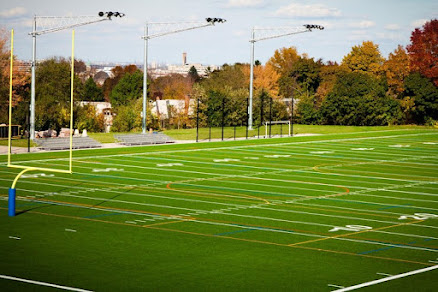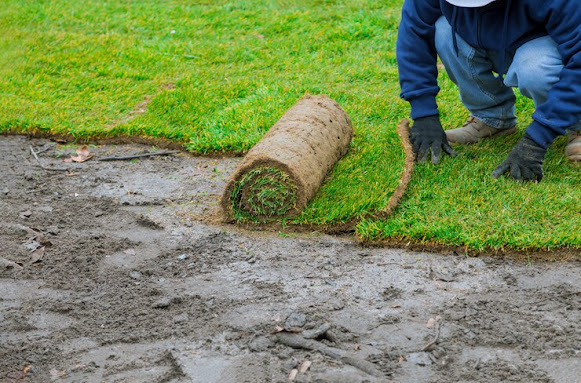How to Remove Turf to Install Artificial Grass
How to Remove Turf to Install Artificial Grass requires careful ground preparation. First, the natural turf must be fully removed to create a level base. A sod cutter or shovel can help strip away the existing grass. After removal, compact the soil and add a layer of crushed rock or sand. This ensures proper drainage and a smooth surface. Only then can the artificial turf be installed for a durable, low-maintenance lawn.
Why Proper Turf Removal Matters
Before diving into the steps, it’s essential to understand why turf removal is so important. Installing artificial grass directly over old turf can lead to issues like poor drainage, uneven surfaces, and premature wear. Removing turf creates a stable foundation, reduces weed growth, and ensures your investment looks and performs its best.
Lakota Design Group emphasizes that skipping proper removal often leads to costly mistakes down the road. By starting right, you set the stage for long-term success in your outdoor transformation.
Planning and Preparing the Area
Artificial grass is becoming a popular choice for homeowners who want a low-maintenance, green lawn all year round. The first step to achieving that perfect look is knowing How To Remove Turf properly before installation. At Lakota Design Group, we understand that turf removal is not just about pulling up grass — it’s about preparing the ground correctly so your synthetic lawn lasts for years. Whether you’re considering turf removal for synthetic grass installation in your backyard or planning a full-scale landscape project, the process can be smooth and efficient with the right approach.
Good planning makes the entire process easier. Walk around your yard and mark the areas where the artificial turf will be installed. Take note of trees, flower beds, and other features you’ll need to work around.
When preparing the ground for artificial turf, consider these key points:
Measure the total square footage to know how much turf and base material you’ll need.
Identify drainage patterns to prevent future puddling.
Decide if you’ll do the work yourself or hire professionals like Lakota Design Group for expert assistance.
Proper planning saves time and ensures your new artificial lawn blends seamlessly with the rest of your landscape.
Cutting and Removing Existing Turf
The real work begins with removing the old grass. There are a few methods you can use depending on the size of your yard and your budget:
Hand Tools for Small Areas
If you’re dealing with a small patch, a simple flat shovel or garden spade will work. Cut the turf into strips and roll them up for easier removal. This method is cost-effective but labor-intensive.
Sod Cutter for Larger Lawns
For larger spaces, renting a sod cutter is highly recommended. A sod cutter slices the turf into manageable strips, making removal quicker and more efficient. It’s one of the best practices for turf replacement with fake grass because it minimizes physical strain while delivering cleaner results.
Disposal
Once the turf is cut, you’ll need to dispose of it properly. Some municipalities offer green waste collection, while others may require a trip to the local landfill. In some cases, you can even reuse the sod elsewhere.
Clearing Debris and Leveling the Soil
After the grass is removed, inspect the soil for roots, rocks, or leftover debris. These obstacles can prevent the artificial turf from laying flat.
Use a rake to smooth the area.
Remove large stones and compact the soil with a roller or plate compactor.
Adjust the soil level so it slopes slightly away from your house to allow for proper drainage.
At this stage, removing turf for backyard artificial lawns becomes more than just a cosmetic step — it’s about creating a long-lasting base. Lakota Design Group recommends taking extra care with leveling, as any bumps will show once the turf is installed.
Installing the Base Material
Once the old turf is gone and the soil is prepared, it’s time to add a base layer. This step is crucial for durability and drainage.
Spread a layer of crushed rock or decomposed granite (usually 3–4 inches thick).
Compact the material thoroughly using a vibrating plate compactor.
Ensure the surface is smooth but allows for water to drain easily.
This is one of the most critical best practices for turf replacement with fake grass because a strong base keeps your lawn even and prevents sagging over time.
Weed Barrier Installation
To prevent future weed growth, lay down a high-quality weed barrier fabric over the compacted base. This ensures you won’t see unwanted plants pushing through your new artificial lawn later.
Lakota Design Group often recommends professional-grade barriers for long-term results. When paired with proper base preparation, you’ll minimize maintenance for years to come.
Installing the Artificial Grass
Now comes the exciting part: rolling out your artificial turf.
Lay the turf over the prepared base, making sure the grain of the grass blades faces the same direction.
Trim the edges with a utility knife to fit around curves, walkways, or flower beds.
Secure the turf using landscape nails or turf staples, spacing them every 6–8 inches along the edges.
Brush the blades upright with a stiff broom for a natural appearance.
When done right, your new lawn will blend seamlessly with the surrounding area, whether it’s part of a modern project or a traditional landscape design San Jose style.
Infill and Final Touches
To keep the turf blades upright and provide cushioning, infill materials like silica sand or crumb rubber are spread across the surface. This final step enhances the look and feel of the lawn while helping with drainage and stability.
Lakota Design Group often incorporates this step into their turf removal for synthetic grass installation services, ensuring homeowners get both beauty and function in their new lawns.
Best Practices for Long-Term Success
Here are some quick reminders to keep your artificial turf looking great:
Always compact your base layer thoroughly.
Use a weed barrier to prevent future growth.
Choose high-quality artificial turf for durability.
Brush and rinse your lawn regularly to maintain its fresh look.
These steps are not only best practices for turf replacement with fake grass but also essential guidelines for any homeowner investing in artificial lawns.
Landscape Design San Jose Considerations
For homeowners in California, particularly those exploring landscape design San Jose, removing turf and installing artificial grass is an excellent way to save water and reduce maintenance. The region’s climate makes artificial turf a practical and eco-friendly choice. Plus, professional services like Lakota Design Group can tailor the installation to complement local design trends.
Final Thoughts
Learning how to remove turf correctly is the foundation of a successful artificial grass installation. From cutting and removing the old sod to preparing the base and adding final touches, each step matters for durability and appearance. Lakota Design Group specializes in guiding homeowners through this process, ensuring a professional finish every time.
If you’re ready to transform your lawn with artificial turf, don’t hesitate to contact us today. Let’s create a low-maintenance, beautiful outdoor space that you’ll enjoy for years to come.
FAQs
Q1: How long does turf removal and artificial grass installation take?
For an average backyard, the process can take anywhere from 2–4 days, depending on the size of the area and whether professional equipment like a sod cutter is used.
Q2: Can I install artificial grass myself after removing turf?
Yes, it’s possible for DIY enthusiasts, especially in smaller spaces. However, hiring professionals like Lakota Design Group ensures proper preparation, drainage, and long-term durability.
Q3: Is artificial turf safe for pets and children?
Absolutely. High-quality artificial turf is designed to be non-toxic, durable, and comfortable, making it safe for kids and pets to play on year-round.


Comments
Post a Comment